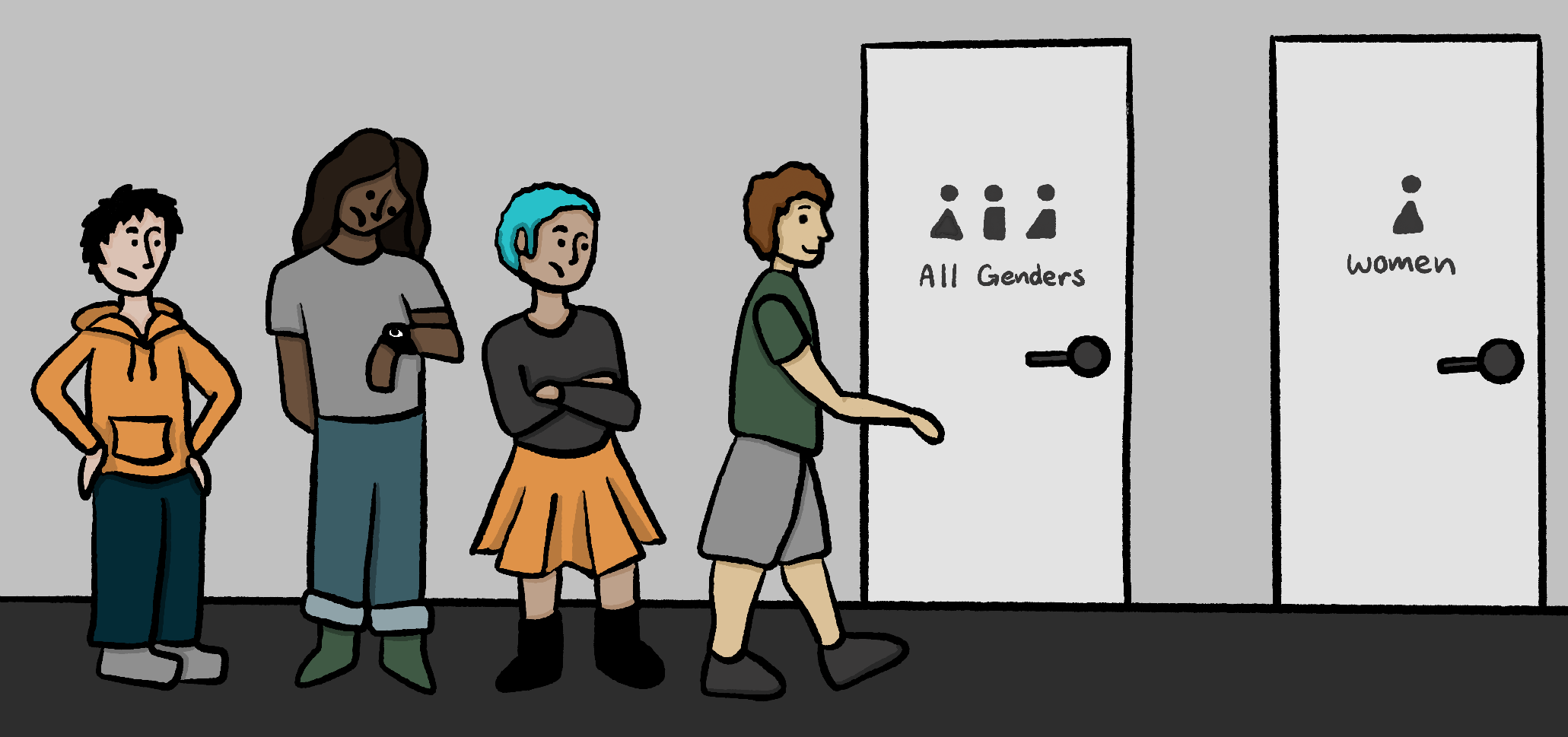
Every school day, students congregate in the all-gender bathrooms on the first floor of J. R. Howard Hall with the simple goal of using the restroom between classes. The crowd quickly grows while students wait for a stall to open up, especially when one of the toilets is out of order. Luckily, if you are a person who can use a urinal, you have a free fast pass and can skip the line. In the time you save, you might even be able to take a few seconds to close the stall door behind you, or at least wash your hands before leaving.
This experience is commonplace for many students at Lewis & Clark: waiting around in a space that is intended to increase inclusivity, but still remains more accessible for a privileged few. No one should have easier access to use a restroom than someone else, especially not a restroom that is labeled as accessible to all.
If the purpose of all-gender restrooms is to increase accessibility, then they should not have urinals. Everyone can use a toilet, but not everyone can use a urinal. All students should be able to go into a stall and have privacy. No one should have to feel exposed or embarrassed by revealing whether they can use certain stalls, but not others.
It is not fair to label a space as neutral and accessible when the design of the space leads to inequity of access. The process of converting a restroom to be gender inclusive is not as simple as changing the sign on the door. For a truly neutral, gender inclusive and accessible space, urinals in gender neutral bathrooms should be removed and replaced with toilets, and more restrooms on campus should be converted to gender neutral spaces in order to provide more options to students.
Many gender-neutral bathrooms on campus are obviously converted from men’s restrooms. With urinals in plain sight and their position in opposition to women’s restrooms, many students still treat these as men’s bathrooms. For example, the gender-neutral bathroom in Aubrey R. Watzek Library, located near the elevator on the first floor, has one exposed urinal and one stall with a toilet. The restroom directly next to it is designated as a women’s restroom, and there are no other gender-neutral options available anywhere else in the building.
All-gender restrooms should serve as a safe space for all students on campus, especially for transgender and gender-nonconforming students. However, the current conditions of these spaces can lead to frustration and discomfort. If LC were to replace all of the urinals with toilets in the all-gender restrooms this would ensure an equitable environment for all people, regardless of the stall that they choose.
On-campus students are used to gender neutral facilities within dorms, and there is no reason the space where academic work is completed should be so different from the spaces where students live. There need to be more options for gender-neutral bathrooms in academic buildings, especially for students who prefer to exclusively use these neutral spaces.
Space matters. If the school attempts to be intentional about creating a space for all people, then every person should be able to benefit from that space.
Subscribe to the Mossy Log Newsletter
Stay up to date with the goings-on at Lewis & Clark! Get the top stories or your favorite section delivered to your inbox whenever we release a new issue.

Leave a Reply